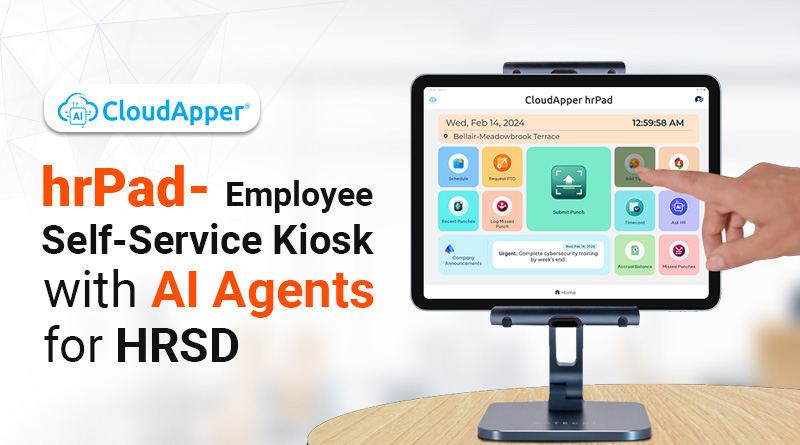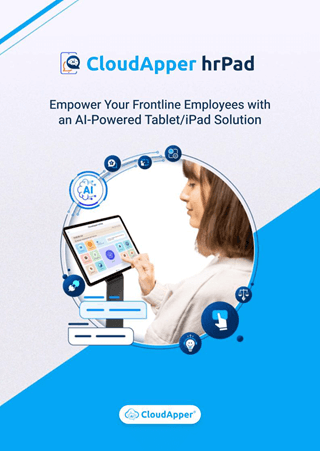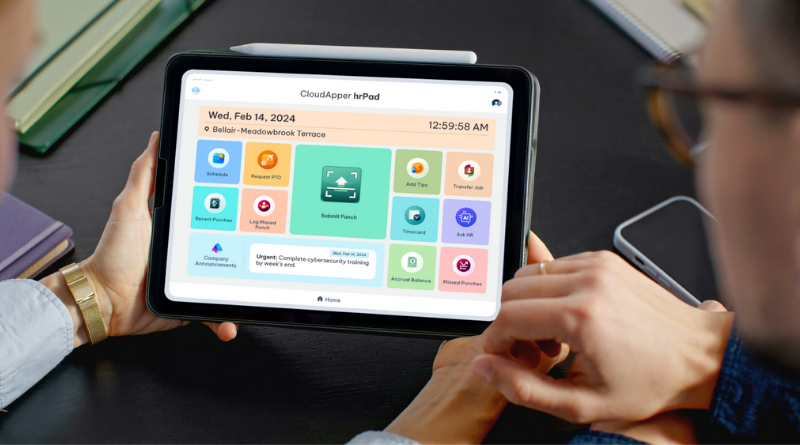Table of Contents
The modern workplace has a glaring paradox: while knowledge workers enjoy seamless digital experiences with AI assistants, project management tools, and instant access to information, frontline employees—who often constitute 80% of the global workforce—are left to navigate outdated systems, paper forms, and lengthy waits for HR support.
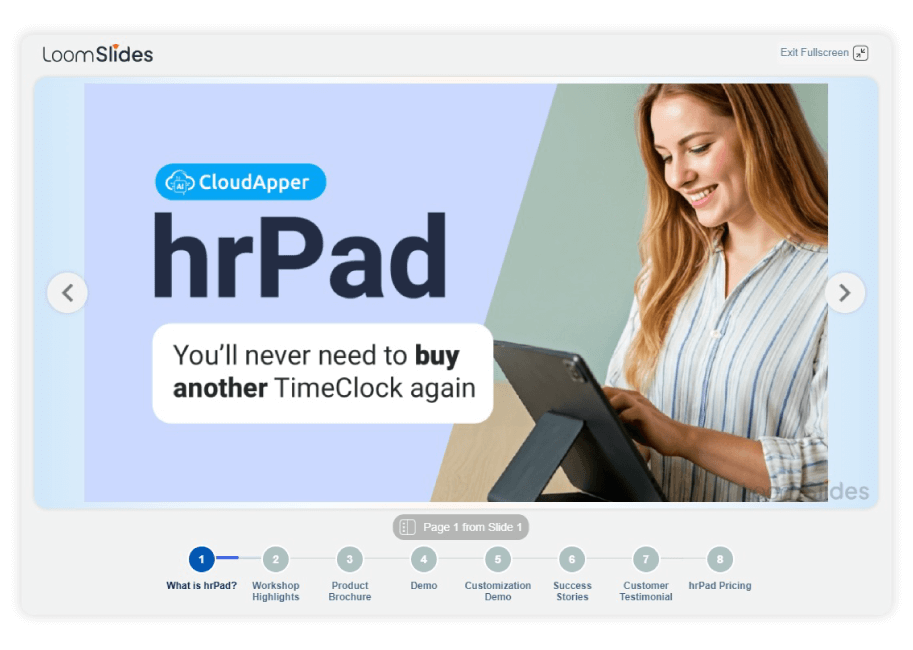
For more information on CloudApper hrPad visit our page here.
As artificial intelligence transforms workforce management, we face a critical question: Are we designing AI systems that serve all employees equitably, or are we widening the digital divide?
The Invisible Majority
Deskless workers in manufacturing, healthcare, retail, hospitality, and logistics rarely have company email addresses, desktop computers, or time during their shifts to navigate complex HR portals. Yet they need HR support just as much—if not more—than their desk-based counterparts. Questions about schedules, time-off requests, benefits enrollment, and policy clarifications don’t pause because someone is on a factory floor or serving customers.
Traditional HR technology has failed this population. Complex interfaces designed for desktop use don’t translate well to the shop floor. Multi-step processes that assume digital literacy create frustration. And crucially, these systems often lack the contextual awareness to provide employees with the help they need.
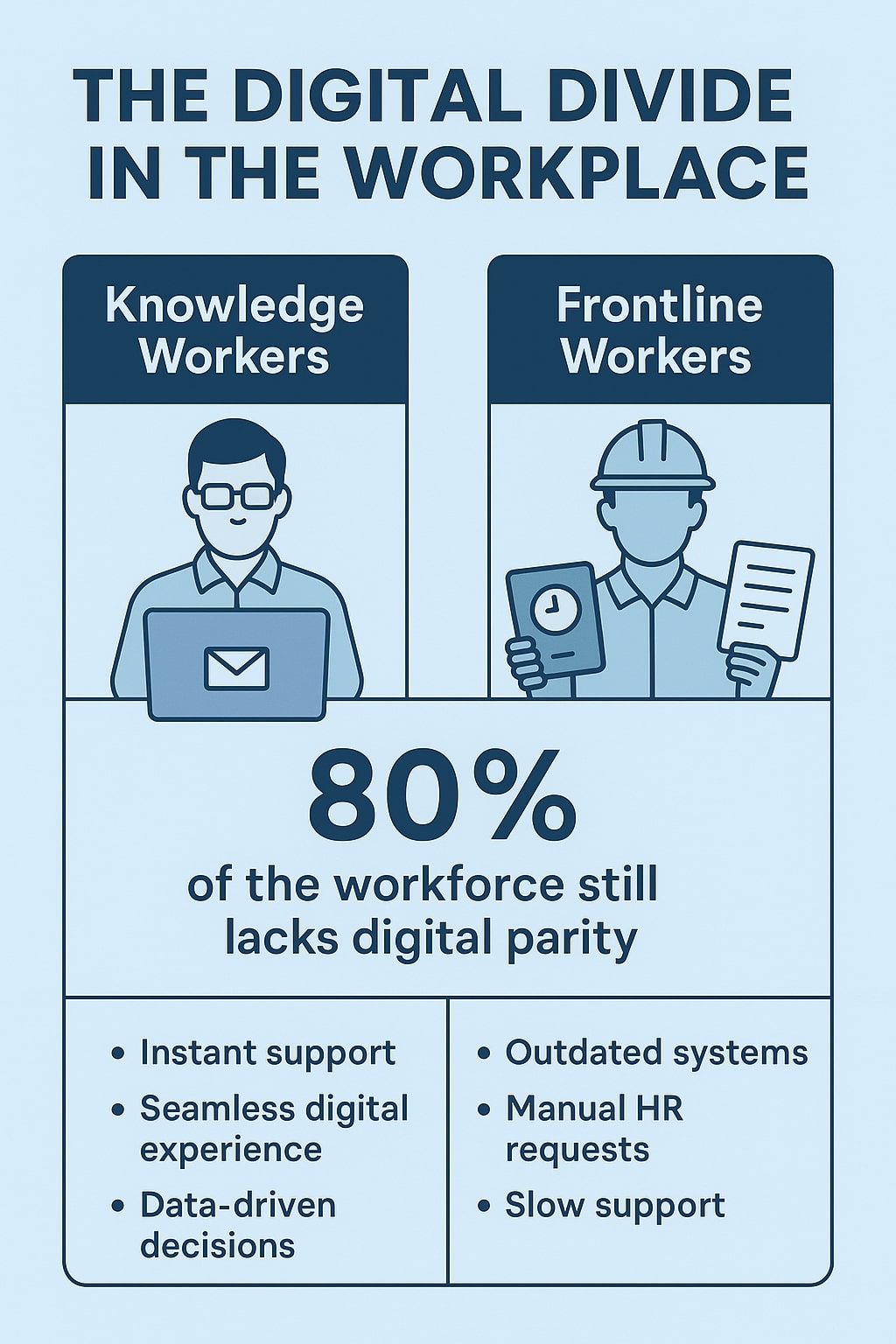
Human-Centered AI: Starting with Ethics and Accessibility
Deploying AI in HR contexts requires a fundamentally different approach than consumer applications. When AI systems make recommendations about scheduling, performance, or career development, they have a direct impact on people’s livelihoods and well-being. This demands what we call “human-centered AI”—technology designed with ethical considerations and accessibility at the foundation, not as afterthoughts.
Addressing Algorithmic Bias
AI systems trained on historical data can perpetuate existing workplace inequities. If past scheduling patterns favored certain demographics, an AI scheduler might replicate those biases. If performance data reflected subjective manager preferences, AI recommendations could amplify unfairness.
Responsible AI deployment in workforce management requires continuous bias auditing, diverse training data, and transparency in decision-making processes. Employees should understand why the AI suggests a particular schedule or responds to their query in a specific way. When AI systems explain their reasoning in plain language, trust increases and potential biases become visible.
Designing for True Accessibility
Accessibility in HR AI goes beyond screen readers and font sizes. It means designing for varying literacy levels, multiple languages, and different comfort levels with technology. Voice-enabled interfaces enable employees to ask questions naturally without needing to navigate menus. Visual interfaces with minimal text are beneficial for individuals with reading challenges. Multilingual support ensures non-native speakers receive the same quality of service.
Consider a warehouse worker with limited English proficiency who needs to request time off. A truly accessible AI system allows them to speak in their native language, understands the context of their request, and guides them through the process step-by-step—all without requiring them to decipher complex HR terminology or navigate dropdown menus.
Building Trust Through Transparency and Control
The biggest barrier to AI adoption in frontline environments isn’t technological—it’s trust. Employees need confidence that AI systems work for them, not just their employers.
Transparency in AI Decision-Making
When an AI system denies a time-off request or suggests a schedule change, employees deserve to know why. Human-centered AI communicates clearly: “Your vacation request conflicts with three other approved requests in your department” rather than a generic “Request denied.” This transparency transforms AI from a black box into an explainable partner.
Employee Agency and Escalation
No matter how sophisticated, AI shouldn’t be the final word on important employee matters. Effective systems provide clear escalation paths to human HR professionals when needed. Employees should feel empowered to challenge AI recommendations or seek human judgment on complex situations. This hybrid approach—where AI handles routine tasks while humans address exceptions—builds trust and ensures employees maintain agency over important decisions.
The CloudApper hrPad Approach: Responsible Innovation in Action
Solutions like CloudApper’s hrPad demonstrate how human-centered AI principles translate into practice. By transforming standard tablets into intelligent employee self-service kiosks, hrPad makes sophisticated AI accessible exactly where frontline employees work.
The system’s conversational AI agents understand natural language queries in multiple languages, allowing employees to ask HR questions as they would to a colleague. Rather than forcing workers to learn complex software, the AI adapts to how people naturally communicate. This dramatically lowers barriers for employees with varying digital literacy levels.
Critically, hrPad addresses the accessibility challenge through multi-modal interaction—employees can speak, type, or tap their way to answers. Voice interfaces serve those uncomfortable with keyboards. Visual workflows guide employees through complex processes step-by-step. The AI provides context-aware responses based on the employee’s role, location, and history, making interactions feel personalized rather than automated.
From an ethical standpoint, the system maintains transparency by explaining its responses and providing clear escalation paths when human judgment is needed. Time tracking, attendance management, and policy information remain auditable and explainable—essential for maintaining employee trust and regulatory compliance.
The Path Forward
As AI becomes ubiquitous in workforce management, the companies that thrive will be those that reject one-size-fits-all solutions in favor of human-centered design. This means:
- Starting with empathy: Understanding the actual work environment and constraints of frontline employees
- Prioritizing accessibility: Designing for the least digitally connected employee, not the most sophisticated
- Maintaining transparency: Making AI decision-making explainable and contestable
- Ensuring human oversight: Keeping humans in the loop for important decisions
- Continuously auditing for bias: Regularly testing systems for unintended discrimination
The deskless workforce has been underserved by technology for too long. Human-centered AI offers an opportunity to close that gap—not by giving frontline workers watered-down versions of knowledge worker tools, but by designing systems specifically for their needs, contexts, and capabilities.
When we design AI that truly serves all employees, we don’t just improve operational efficiency. We build more equitable workplaces where every person, regardless of their role or digital literacy, has the tools and support they need to succeed. That’s the promise of human-centered AI in workforce management—and it’s a future worth building.
Looking to empower your frontline workforce with accessible, ethical AI? Learn how CloudApper hrPad transforms employee self-service for deskless workers at cloudapper.
What is CloudApper AI Platform?
CloudApper AI is an advanced platform that enables organizations to integrate AI into their existing enterprise systems effortlessly, without the need for technical expertise, costly development, or upgrading the underlying infrastructure. By transforming legacy systems into AI-capable solutions, CloudApper allows companies to harness the power of Generative AI quickly and efficiently. This approach has been successfully implemented with leading systems like UKG, Workday, Oracle, Paradox, Amazon AWS Bedrock and can be applied across various industries, helping businesses enhance productivity, automate processes, and gain deeper insights without the usual complexities. With CloudApper AI, you can start experiencing the transformative benefits of AI today. Learn More

